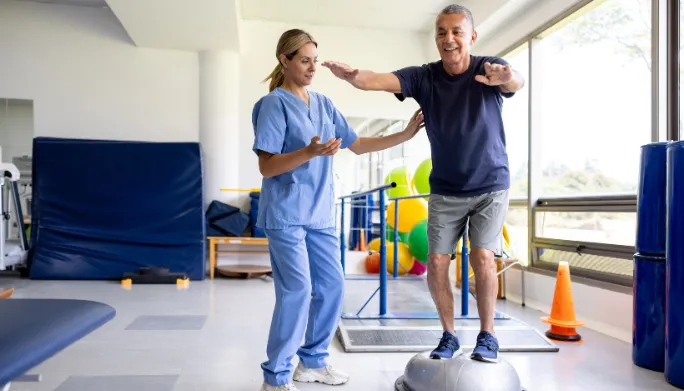Winter in Texas might not bring the snow-covered landscapes seen in other parts of the country, but it does present its own set of challenges, especially for our senior population. In the first part of our series, “Winter’s Slippery Slope,” we delve into the unique risks posed by icy weather in Texas and explore how physical therapy can play a vital role in mitigating these dangers.
Icy Conditions in Texas:
While Texas is known for its milder winter climate, it’s not immune to occasional icy conditions, particularly in areas like North Richland Hills. Even a thin layer of ice can turn sidewalks and roads into hazardous terrains, increasing the risk of slips and falls. This is particularly concerning for seniors who may already face challenges in maintaining balance and stability.
Why Seniors are Vulnerable:
Seniors are more susceptible to the dangers of icy weather due to various factors. Reduced muscle strength, changes in balance, and slower reflexes can make navigating slippery surfaces challenging. Additionally, conditions like arthritis or chronic pain may further compromise mobility and reflexive performance in the muscles, increasing the risk of falls.
Relevance to Physical Therapy:
Assessment of Individual Risk:
Physical therapists can assess an individual’s risk factors, considering factors like muscle strength, balance, and gait. This personalized approach allows for targeted interventions that address specific deficits.
Balance Training:
Tailored exercises focused on improving balance are a key component of fall prevention in icy conditions. Physical therapists can design programs that enhance stability and reduce the risk of falls, even on slippery surfaces. There is a difference between static balance and dynamic balance; if all you ever do is stand at a counter and kick out your hips, you’re missing a large piece of the puzzle.
Gait Training:
Addressing changes in gait is essential for navigating icy terrain safely. Physical therapists can work with seniors to improve their walking patterns, ensuring a more stable and secure stride. Another big issue is ankle range of motion, without it and good control through the range, you have a recipe for disaster since that’s the first line of defense (stability).
Education on Safe Movement:
Providing education on safe movement in icy conditions is crucial. Physical therapists can offer practical tips on walking techniques, appropriate footwear, and strategies for navigating outdoor spaces during winter.
Understanding the risks associated with icy weather in Texas is the first step in empowering seniors to navigate winter safely. Physical therapy emerges as a valuable ally in addressing these risks, offering personalized interventions that enhance mobility, balance, and overall well-being. Stay tuned for the next parts of our series, where we’ll delve deeper into identifying deficits and practical strategies for fall prevention. Winter might be slippery, but with the right knowledge and support, our seniors can stride confidently.



